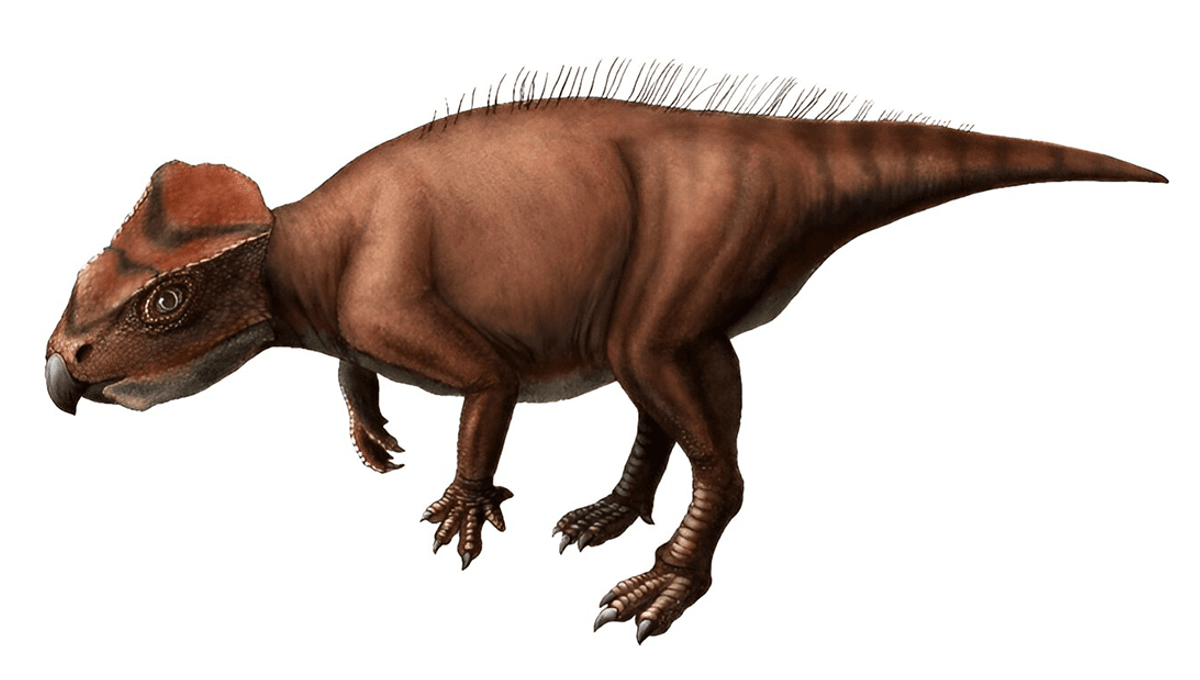
There are many words that come to mind when we think of dinosaurs. Majestic. Powerful. Terrifying. You know: generally, whatever the opposite is to “similar to a weird little gnome”.
Not so with a new species of dinosaur recently discovered in Tamba-Sasayama City, in the Hyogo Prefecture of Japan. Comprising 17 well-preserved bones, most of which belong to this single individual dino, it all adds up to a picture of an ancient beast that was, by anyone’s estimate, kind of a weird little guy.
Measuring only around 80 centimeters (31.5 inches) in length and weighing in at just 10 kilograms (22 pounds), it had about the same dimensions as two housecats in a trench coat – and judging by the expression on its face, it kind of knew that.
While it’s technically a ceratopsian – one of those herbivorous, beaked dinos that lived in Cretaceous-era North America – it lacks many of the iconic traits seen in other species of the group. The very name “ceratopsia”, after all, means “horned faces”; it’s a group typified in the public consciousness by Triceratops, a huge, frilled, multi-horned beast that even the mighty T. Rex likely shied away from.
In contrast, this new species has no big frills or horns. His forelimbs don’t reach the ground. He has a weird little mohawk down his back, and, according to analyses carried out on his leg bones, he was likely young and still growing when he died – potentially a kind of dinosaurian awkward teen.
In total, he was kind of a gremlin, and to that end, he’s been named Sasayamagnomus saegusai. The name comes from three sources: Sasaya, where the fossil was found; Saegusa, the family name of the late paleontologist Haruo Saegusa; and gnomes, the mythical little creatures that live underground and scuttle about guarding their treasure.
So, what sets this little creature so far apart from the other ceratopsians? Well, one clue can be found in where he was discovered – because, as you may be aware, Japan is not in North America. This is actually the farthest east a ceratopsian has ever been found, but it’s not evidence of some previously unknown exclave of horny dinosaurs.
Rather, it means that the new S. saegusai fossil is so old that it dates from before the group made the move to North America. In fact, it shares enough similarities with certain other fossils – including the Chinese Auroraceratops rugosus and the American Aquilops americanus – to have helped narrow down estimates of precisely when that great migration happened.
So, while he may be a funny-looking fellow, he has a big story to tell. And, all things considered, we at IFLScience kind of love him. S. saegusai, if you’re looking for work as a company mascot, let us know. We have cookies.
Details of the discovery are published in the journal Papers in Palaeontology.
Source Link: Newly Discovered Tiny Dinosaur Species Was A Real Weird Lil Guy